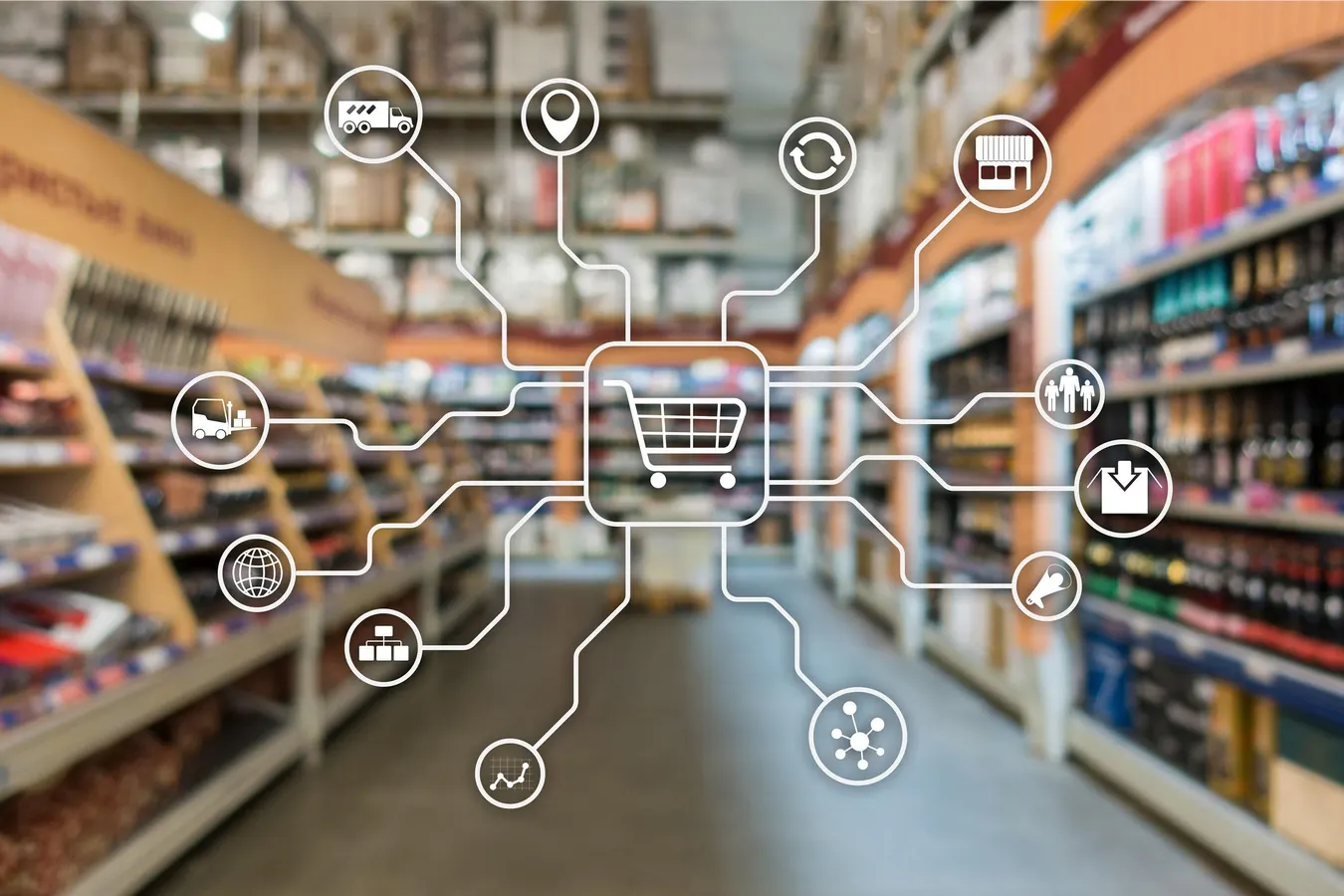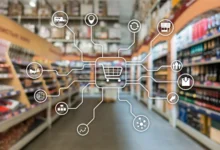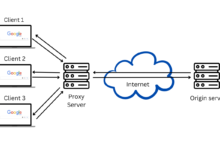
Top Retail Tech Solutions Driving Digital Storefront Innovation
Retail has entered a new era where digital storefronts define how consumers discover, compare, and purchase products. In 2025, eCommerce no longer operates as a separate channel; it merges with in-store experiences to create an integrated retail ecosystem.
From AI-powered recommendations to smart shelves and immersive AR tools, retailers are investing heavily in technology to strengthen both engagement and operational agility. These innovations aren’t just enhancing convenience; they’re building entirely new revenue models.
In this blog, we’ll explore the top retail tech solutions shaping digital storefront innovation and how each technology redefines the way retailers connect with customers and manage operations.
Table of Contents
AI and Machine Learning for Personalization and Demand Forecasting
Artificial intelligence has become the backbone of modern retail strategies. It enables real-time decision-making, personalization at scale, and intelligent forecasting that drives profitability. For digital storefronts, AI isn’t just about automation; it’s about precision and timing.
1. AI-Driven Personalized Marketing and Product Recommendations
AI algorithms analyze browsing behavior, purchase history, and demographic data to deliver hyper-personalized product suggestions. This increases average order value and enhances customer satisfaction by anticipating needs before customers even search. Retailers use these insights to tailor homepage banners, email offers, and push notifications, ensuring every touchpoint feels individual.
2. Demand Forecasting to Optimize Inventory and Reduce Stockouts
Predictive models powered by machine learning identify buying trends, seasonal peaks, and regional preferences. This data helps retailers maintain the right inventory mix while reducing waste and overstock.
It’s particularly critical for omnichannel retailers who manage both physical and digital inventories across multiple fulfillment points.
3. Enhancing Conversion and Customer Retention with Data-Driven Insights
AI tracks micro-behaviors, such as time spent on product pages or cart abandonment frequency, to trigger personalized re-engagement campaigns. These actions reduce churn and improve retention rates. As a result, brands can drive more value from existing traffic without relying solely on new customer acquisition.
4. Real-Time Analytics for Smarter Decision-Making
Retailers thrive on agility. Real-time analytics provides immediate visibility into what’s happening across storefronts, campaigns, and channels.
By monitoring user interactions and transaction flows, retailers can adjust pricing, promotions, and layout designs instantly. Predictive analytics also reveals which trends are emerging, helping businesses stay ahead of market shifts before competitors react.
Cloud Computing and Scalable Infrastructure
Cloud technology gives retail businesses the backbone to scale fast without overextending infrastructure costs. It supports high-traffic events, seamless updates, and synchronized data flow across platforms, essentials for modern digital storefronts.
1. Cloud Platforms Enabling Flexible and Cost-Effective Scalability
Retail traffic is rarely consistent. Cloud platforms allow retailers to scale up during seasonal peaks and scale down during off-seasons. This elasticity ensures reliability without incurring unnecessary server costs.
For global brands, cloud infrastructure supports unified digital storefronts accessible across regions with consistent performance.
2. Centralized Data Ecosystems for Unified Operations
Centralized cloud data systems combine inventory, customer, and sales data under one roof. This integration eliminates silos and empowers decision-makers with a single source of truth.
Teams across marketing, logistics, and support can act faster because they access the same updated data in real time.
3. Faster Deployment of Features and Updates
With cloud-native systems, retailers can roll out feature enhancements or security patches in hours instead of weeks. The result is quicker adaptation to customer feedback and reduced downtime during updates.
4. Security and Compliance in Cloud Environments
Cybersecurity is now as vital as product quality. Cloud service providers offer built-in encryption, firewalls, and compliance frameworks such as PCI DSS and GDPR.
Retailers must still implement robust access control, encryption of sensitive data, and regular audits to ensure customer information remains protected. By prioritizing compliance early, retailers avoid costly breaches that damage trust and reputation.
Augmented Reality (AR) and Virtual Reality (VR) Experiences
AR and VR technologies are reshaping how consumers shop by offering immersive experiences that merge the physical and digital worlds. These tools build confidence in buying decisions and reduce return rates by letting customers visualize products in their own context.
1. Immersive Virtual Try-Ons and Product Visualization
AR try-on tools allow customers to preview products from makeup shades to furniture pieces- directly through their devices.
Apps like IKEA Place and Sephora Virtual Artist show how powerful visualization can drive higher conversion rates and lower uncertainty in online purchases.
2. Bridging the Gap Between Physical and Digital Shopping
AR-enabled pop-ups and VR showrooms create continuity between online and in-store experiences. Shoppers can interact with digital catalogs in physical stores or explore store layouts virtually from home, strengthening brand engagement.
4. Interactive Shopping and Engagement Tools
Beyond visualization, AR also powers interactive product customization, letting users modify colors, textures, or configurations in real time.
In physical spaces, VR setups turn shopping into entertainment, enabling deeper emotional connections with products.
Internet of Things (IoT) for Inventory and Customer Insights
IoT connects every element of the retail ecosystem, from shelves and supply chains to customer journeys. These connected devices generate actionable insights that enhance accuracy, speed, and personalization.
1. Smart Shelves, RFID Tags, and Electronic Shelf Labels (ESLs)
Smart shelves detect low stock levels and alert staff automatically, ensuring products remain available. RFID tags and ESLs maintain real-time pricing and inventory visibility, eliminating manual updates.
2. Real-Time Inventory Tracking and Dynamic Pricing
By linking IoT sensors with POS systems, retailers gain a live view of stock across warehouses and storefronts. This allows for dynamic pricing based on demand, reducing both overstocks and markdown losses.
3. Beacons for Personalized In-Store Promotions
Beacons can send location-based offers or product information to customers’ smartphones as they move through the store. It’s a subtle yet powerful way to enhance engagement and increase dwell time.
4. Integrating IoT with Omnichannel Retail
The true value of IoT appears when physical and digital experiences converge. IoT data feeds into omnichannel systems to ensure consistent pricing, inventory, and service across platforms.
Retailers can track a customer’s journey from app browsing to in-store purchase, improving both forecasting and fulfillment.
Automation and Robotics for Operational Efficiency
Automation technologies streamline repetitive processes, reduce costs, and enhance speed. From warehouses to customer service desks, automation ensures operations stay lean and consistent.
1. Automated Checkout and Cashier-Less Store Technologies
Contactless and mobile payments are projected to grow by 12.4% annually from 2025 to 2034, driven by consumer demand for seamless digital shopping experiences.
Cashier-less systems powered by computer vision and IoT sensors make this possible. They eliminate queues, shorten transactions, and improve customer satisfaction.
2. Inventory Robots for Stock Management and Replenishment
Autonomous robots handle stock scanning, sorting, and shelf replenishment, freeing up human workers for higher-value tasks. These systems also capture data to identify slow-moving or misplaced inventory instantly.
3. AI-Powered Chatbots and Customer Service Automation
AI chatbots manage large volumes of inquiries, order tracking, and returns. Natural language processing ensures interactions feel conversational while keeping response times near zero.
4. Enhancing Supply Chain Visibility and Logistics
Blockchain, combined with IoT, enhances transparency by providing immutable records of product movement. Retailers and customers can verify authenticity and location in real time.
Automation tools analyze logistics data to minimize delivery delays and improve route efficiency, ensuring faster, greener fulfillment.
Conclusion: The Future of Retail is Tech-Driven and Customer-Centric
The digital storefront has evolved from a transactional space to a strategic growth engine. Technologies like AI, IoT, cloud computing, and AR/VR redefine what’s possible, making operations smarter and experiences more human.
Retailers that adopt these retail tech solutions early will outperform competitors by delivering consistent value across every channel. Continuous innovation, backed by the right retail app development company, will ensure brands stay relevant in a market where technology sets the pace of change.








